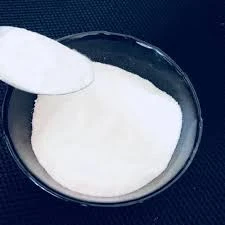
Sep . 29, 2024 04:24 Back to list
Is HPMC a Safe Choice for Your Health and Wellness Needs?
Is HPMC Safe? A Comprehensive Overview
Hydroxypropyl Methylcellulose (HPMC), a non-ionic cellulose ether, has gained considerable attention in various industries, including food, pharmaceuticals, and cosmetics. Its versatility is attributed to its ability to form gels, retain moisture, and act as a thickening agent. However, with the increasing prevalence of HPMC in everyday products, questions regarding its safety have emerged. This article aims to provide a detailed analysis of HPMC, addressing its safety profile and applications.
What is HPMC?
HPMC is derived from cellulose, a natural polymer found in plant cell walls. Through chemical modification, cellulose is transformed into HPMC, allowing it to dissolve in water and impart various functional properties. In the food industry, HPMC serves as a thickener, emulsifier, and stabilizer, while in pharmaceuticals, it is commonly used as a coating agent for tablets and as a laxative.
Safety and Regulatory Status
The safety of HPMC has been extensively evaluated by various health and safety regulatory agencies. In the United States, the Food and Drug Administration (FDA) has classified HPMC as Generally Recognized as Safe (GRAS) for use in food products. This designation indicates that HPMC can be used safely in food at specified concentrations.
In the pharmaceutical realm, HPMC is an approved excipient in many drug formulations. The European Food Safety Authority (EFSA) has also stated that HPMC is safe for food use, underlining its acceptance in the international regulatory community.
Potential Health Concerns
is hpmc safe

Despite its general safety profile, some concerns have been raised regarding HPMC. For instance, certain individuals may experience allergic reactions or gastrointestinal discomfort when consuming products containing HPMC. This reaction is typically rare and often associated with specific allergies. As with any food additive or pharmaceutical agent, moderation is essential, and consumers are encouraged to consult healthcare professionals if they have underlying health conditions.
Moreover, the production process of HPMC involves the use of chemicals, which has led to suspicions about contamination. However, reputable manufacturers adhere to stringent quality controls, ensuring that their HPMC products are safe and free from harmful impurities.
Applications in Food and Pharmaceuticals
HPMC is widely recognized for its diverse applications. In food products, it is commonly found in gluten-free baked goods, sauces, salad dressings, and dairy products. Its thickening properties enhance texture and stability, making it a favored ingredient for many manufacturers striving for quality and consumer satisfaction.
In the pharmaceutical industry, HPMC plays a crucial role as a binder in tablets, aiding in the dissolution and absorption of active ingredients in the body. Additionally, it is utilized in controlled-release drug formulations, ensuring that medications are delivered at a steady rate over time. The multifunctional nature of HPMC ensures that it meets the diverse requirements of both industries.
Conclusion
In summary, HPMC is a widely used food additive and pharmaceutical excipient that has been recognized as safe by multiple regulatory bodies. While some individuals may experience mild adverse reactions, these instances are infrequent. As with any substance, it is important for consumers to be aware of their own health profiles and to consult with healthcare professionals if they have concerns.
Overall, HPMC continues to be a valuable ingredient in many products, contributing to the advancement of food technology and pharmaceutical formulations. As more research is conducted and our understanding of food additives improves, HPMC's role in various industries is likely to expand, providing innovative solutions while ensuring safety for consumers. Thus, it can be said that HPMC is safe for use, provided that it is consumed or used as directed.
-
Versatile Hpmc Uses in Different Industries
NewsJun.19,2025
-
Redispersible Powder's Role in Enhancing Durability of Construction Products
NewsJun.19,2025
-
Hydroxyethyl Cellulose Applications Driving Green Industrial Processes
NewsJun.19,2025
-
Exploring Different Redispersible Polymer Powder
NewsJun.19,2025
-
Choosing the Right Mortar Bonding Agent
NewsJun.19,2025
-
Applications and Significance of China Hpmc in Modern Industries
NewsJun.19,2025







